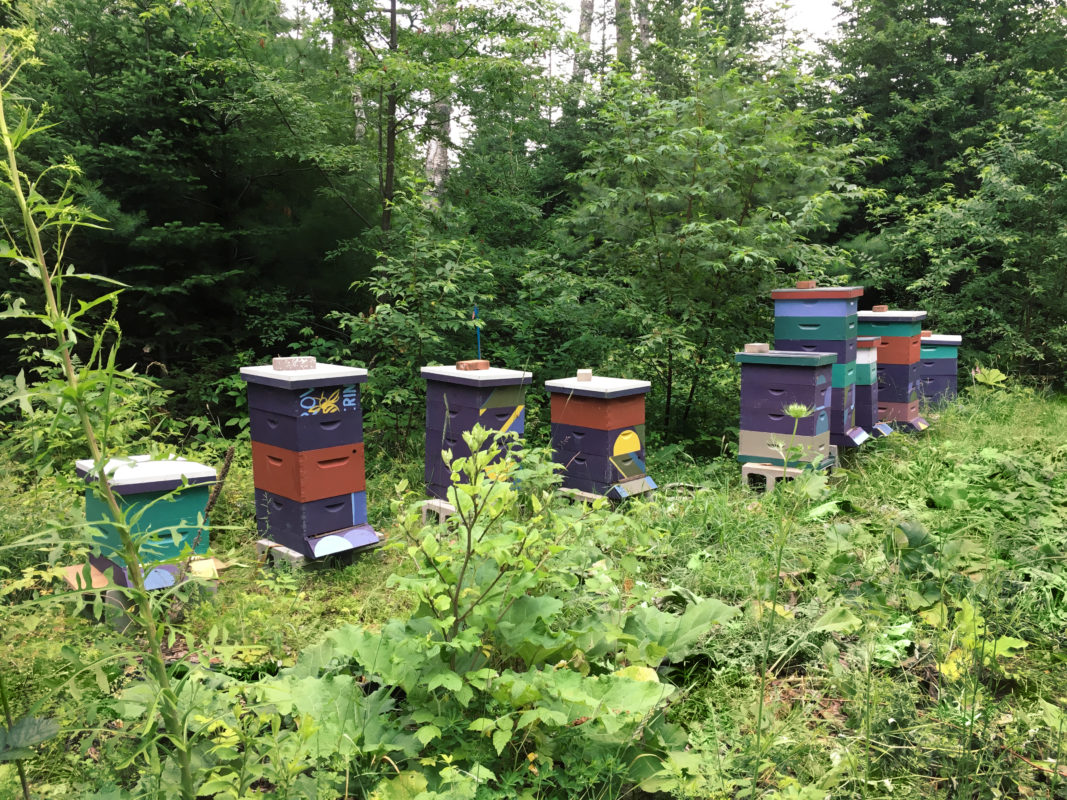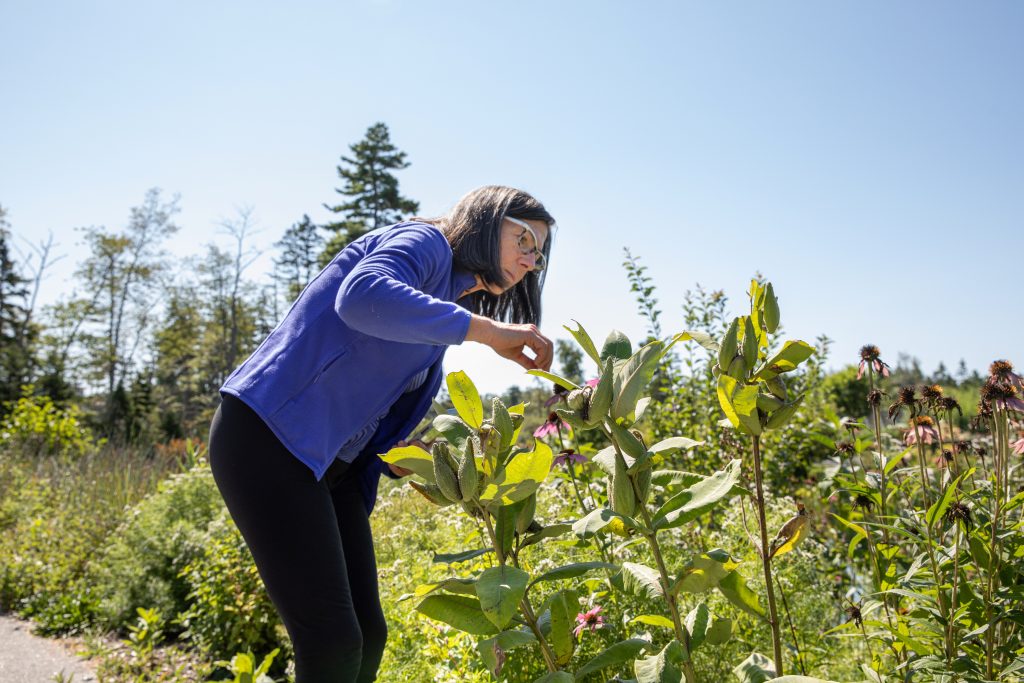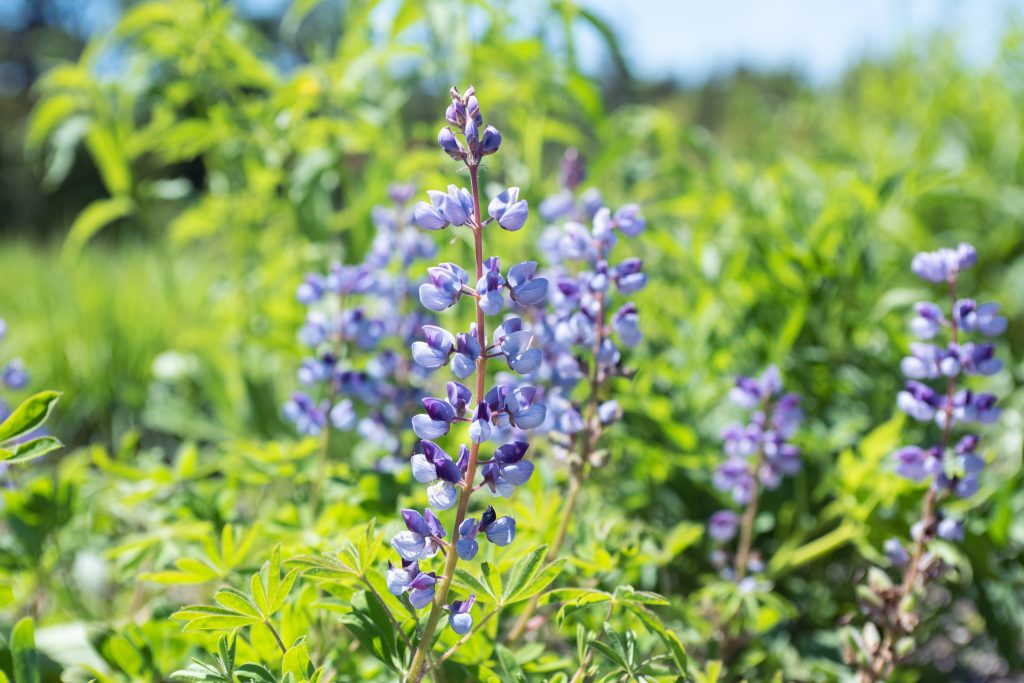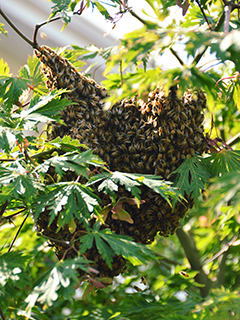 The Gardens has a lot of volunteers, and an important group among them are our volunteer pollinators. Honey bees are a key pollinator that we depend on. We maintain a small apiary – a fancy name for the location where beehives are kept – of about 400,000 honey bees by our horticultural building, and it is maintained by Master Beekeeper (and Gardens CFO) Erin MacGregor Forbes.
The Gardens has a lot of volunteers, and an important group among them are our volunteer pollinators. Honey bees are a key pollinator that we depend on. We maintain a small apiary – a fancy name for the location where beehives are kept – of about 400,000 honey bees by our horticultural building, and it is maintained by Master Beekeeper (and Gardens CFO) Erin MacGregor Forbes.
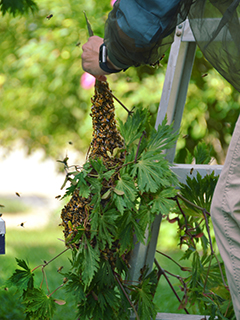
Recently, Erin received an alert from the Maine State Beekeepers Association (MSBA) about a swarm of honey bees that had been reported by an alarmed East Boothbay resident. The swarm had landed on a tree in her front yard, and she used the form on the MSBA website to alert the nearest team member to come remove it. (You can report your own swarm here. Please note that they only remove honey bee swarms – they do not handle wasps, hornets, bumble bees or other stinging insects. If possible, try to ID the insects before reporting.)
“Swarming,” as Erin says, “is the colony level reproductive behavior of honey bees. The colony intentionally raises more individual bees than the current space can accommodate, and also raises a new queen.” Just before the new queen hatches, she makes a specific sound to let the old queen know it is time to depart. The old queen and a portion of the adult bee population in the hive – typically 20-30% of the total colony – fly out of the colony together and form a swarm cluster somewhere usually not too far from the old hive.
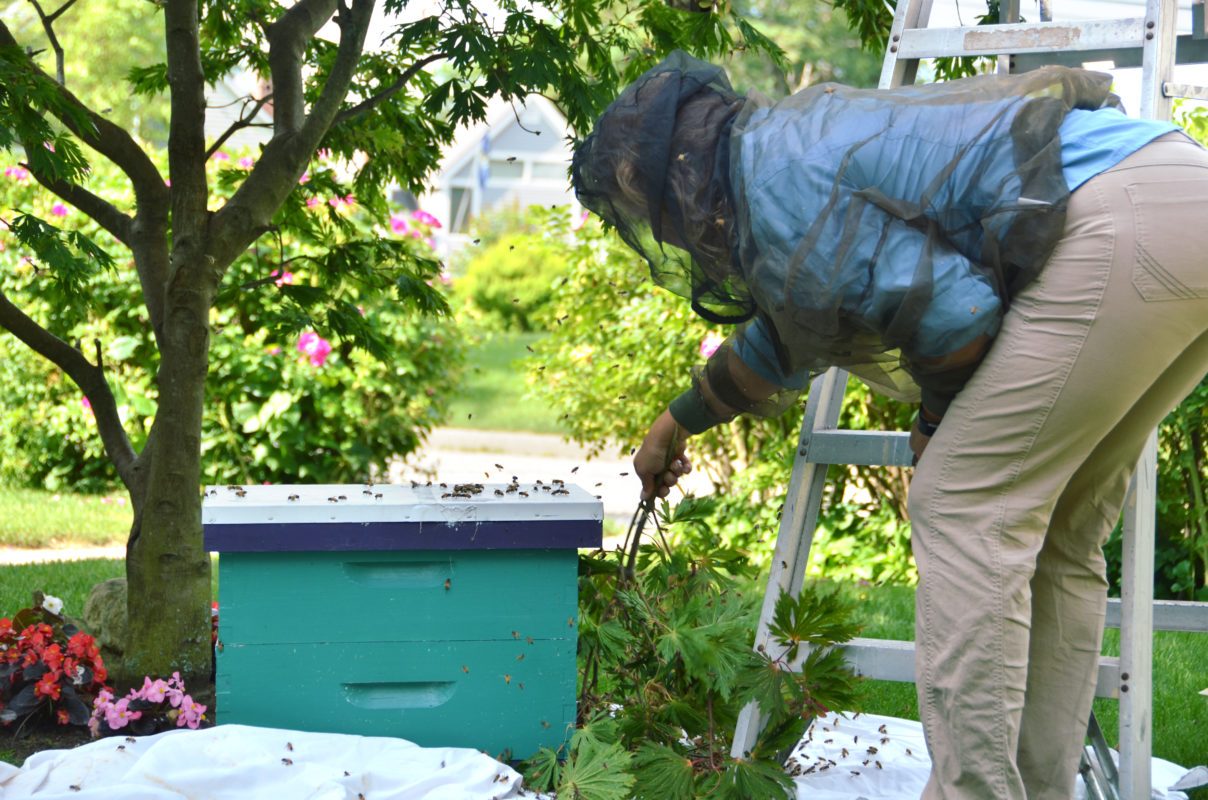
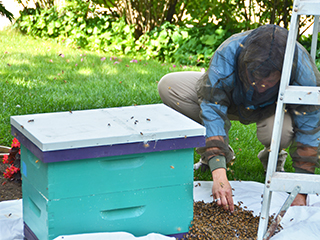 This swarm cluster, while sometimes loud and a little intimidating, is busy and distracted looking for a new cavity to inhabit and create a new hive in. They send out scouts to find locations, while the rest remain with the queen.
This swarm cluster, while sometimes loud and a little intimidating, is busy and distracted looking for a new cavity to inhabit and create a new hive in. They send out scouts to find locations, while the rest remain with the queen.
Erin, prepared with an empty hive ready to go, facilitated the relocation of this particular swarm into an ideal and safe new nest. She was even able to locate the queen in the swarm, and place her directly in the hive to help ensure the swarm moves in. “As far as these bees are concerned,” 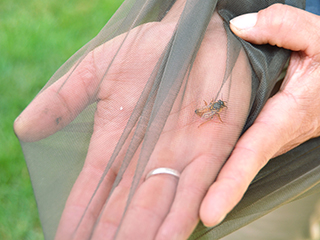 she said, “finding this hive directly below them is a miracle.”
she said, “finding this hive directly below them is a miracle.”
After giving the scouts some time to return and locate the colony’s new home, Erin then came back to collect the hive and add them to our team of volunteer pollinators here at the Gardens. They make hive #9 in our apiary – to the far left in the image below. This year we anticipate harvesting several hundred pounds of honey flavored by the floral diversity that is unique to the Gardens. This honey will be shared with volunteers and members.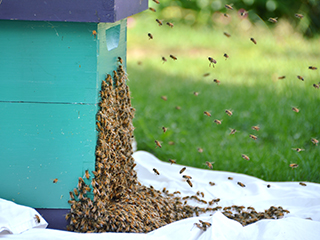
If you want to learn more about our bees, check out our upcoming ‘Secret Lives of Beekeepers’ class this fall on October 18 – more details to come soon!
